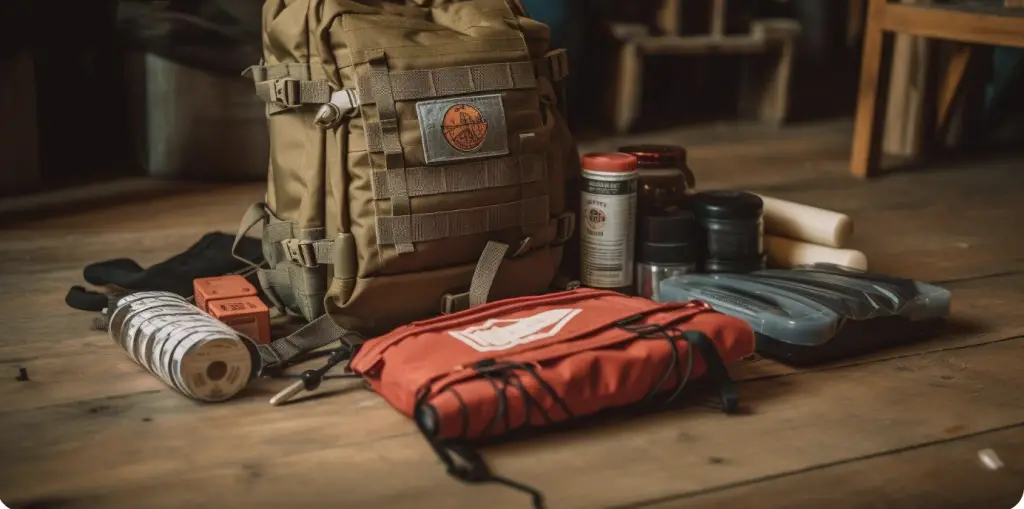
Emergency kits are supposed to be our safety nets. In moments of crisis, such as hurricanes, wildfires, blackouts, or even chemical spills, these kits are designed to keep us afloat until help arrives. But what if the kits we depend on are not enough? What if they’re missing the very tools that could make the difference between survival and struggle?
Across the US, millions of households have some form of an emergency kit. Government agencies like FEMA and the Red Cross offer guidelines. Stores sell pre-packed survival bags. Online checklists promise to cover “everything you need.” However, in reality, most of these kits are incomplete, outdated, or lacking essential items for real-world emergencies.
This newsletter delves into what most emergency kits overlook—and why those gaps could have serious consequences.
The Basics Most Kits Cover (And Do Well)
Let’s start with what’s usually included:
- Flashlights and batteries
- Bottled water and purification tablets
- Canned food or energy bars
- First-aid supplies
- Blankets
- Whistles
- Multi-tools
These are the classic must-haves, and they’re important. No doubt. But disasters today are more complex. From fast-moving wildfires to cyberattacks that disable power grids, the nature of emergencies is evolving—and our preparedness kits haven’t caught up.
What’s Missing: The Overlooked Essentials
1. N95 Masks and Respirators
The COVID-19 pandemic and wildfire seasons have highlighted the importance of clean air. Basic cloth masks won’t cut it during smoke events or chemical spills. Yet, few standard kits include high-quality N95 or P100 respirators.
2. Battery Banks and Solar Chargers
Phones are lifelines in emergencies—for updates, GPS, and staying in touch with loved ones. But a dead phone in a blackout is useless. Power banks and solar panels should be standard, not optional.
3. Prescription Medications and Medical Info
Most kits lack storage for essential medicines. For people with chronic conditions like diabetes or asthma, missing even a day of meds can be dangerous. Kits also rarely include copies of medical records, which could help in triage.
4. Mental Health and Comfort Items
Stress hits hard in disasters. Comfort items—such as stress-relief tools, puzzles, or a favorite snack—help calm panic, especially for children and the elderly. This human side of survival is often ignored.
5. Communication Tools
AM/FM radios are good. But where are the satellite messengers or walkie-talkies? In places with no cell service, these tools save lives.
6. Cash
Digital payments may fail during outages. ATMs might be offline. Kits should include small bills for essentials like fuel, water, or food.
7. Local Maps
We rely on GPS. But what if networks go down? Physical maps are low-tech but critical.
8. Sanitation Gear
Hygiene becomes a major issue in extended outages. Think portable toilets, soap, and sanitation wipes. COVID taught us the cost of ignoring cleanliness.
9. Climate-Specific Items
Blankets in summer or no cooling towels in heatwaves—kits often ignore local weather. Prep should match geography.
10. Pet Supplies
Families often forget their pets’ needs, including food, medicine, and leashes. In real emergencies, leaving pets behind can be a tragic decision.
Why These Items Are Left Out
So why are these key items missing? Several reasons:
- Cost: Fully equipped kits can be expensive. Sellers cut corners to make them more marketable.
- Awareness: Many people don’t realize what’s actually needed until it’s too late.
- Overgeneralization: Generic kits attempt to serve everyone but often fail to fit anyone well.
- Shelf Space: Retailers design kits to look small and portable, not necessarily functional.
- False Sense of Security: A neatly packed kit looks reassuring, even if it’s under-equipped.
The danger is this: when people believe they’re prepared and they’re not, the shock during a crisis can be worse.
Lessons from Past Disasters
Hurricane Katrina (2005)
Families stuck on rooftops ran out of water within days. Many had food but no clean water or communication tools.
California Wildfires (Ongoing)
Evacuees had kits, but they forgot their masks and maps. Thick smoke and road closures created chaos.
Texas Winter Storm (2021)
Many had flashlights, but no way to stay warm. Batteries died fast. Frozen pipes led to unsanitary conditions.
Each event teaches us: real emergencies expose weak kits instantly.
Building a Better Emergency Kit
Want to upgrade your kit? Here’s a checklist of game-changing items:
- N95 or P100 masks (enough for all family members)
- At least two battery banks (fully charged)
- Compact solar charger or hand-crank charger
- 3-day supply of prescriptions + printed medical info
- Satellite communicator or two-way radios
- Emergency cash: $100 in small bills
- Comfort items: chocolate, games, stress balls
- Portable sanitation kit: wipes, soap, bags
- Regional maps and written evacuation routes
- Pet go-bag: food, bowl, meds, leash
Bonus tip: Store all items in waterproof, easy-to-carry bags. Don’t forget to check expiration dates twice a year.
Final Thought: It’s Not Paranoia, It’s Preparedness
Emergencies don’t follow scripts. They’re messy, fast, and scary. A good emergency kit can ease the blow—but only if it’s complete.
Take the time now to check what’s missing from your kit. Update it, personalize it, and make sure it reflects your actual needs.
Because when zero hour comes, it’s too late to wish you had packed better.
Stay ready. Stay safe.




Leave a Reply